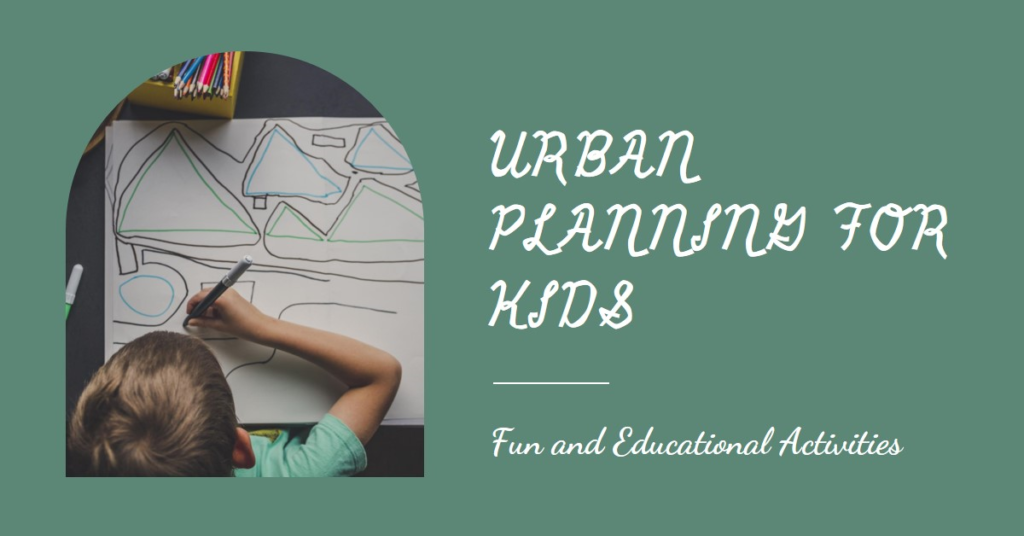
Table of Contents
- Introduction to Urban Planning: Building Foundations
- Hands-On Mapping Activities: Discovering Their World
- Lego City: Building Block by Block
- Virtual City Planning Games: Learning Through Play
- Urban Planning Field Trips: Real-World Exploration
- Community Engagement Projects: Making a Difference
- Storytelling and Role-Playing: Imaginative Learning
- Environmental Awareness: Sustainable City Planning
- Career Exploration: Inspiring Future Urban Planners
- Conclusion: Building a Brighter Future
Introduction to Urban Planning: Building Foundations
Introducing kids to the concept of urban planning starts with explaining the basics. Urban planning involves designing and organizing spaces where people live, work, and play. This can include everything from roads and parks to schools and shopping centers. By understanding these fundamentals, children can begin to see how their own neighborhoods are planned and built.
Begin by discussing the importance of urban planning in everyday life. Explain how good planning can lead to vibrant, healthy, and efficient communities. Use simple language and relatable examples to help kids grasp these ideas. For instance, ask them to imagine their favorite playground and think about how it was designed and built to be both fun and safe.
Hands-On Mapping Activities: Discovering Their World
One of the most engaging ways to teach urban planning is through hands-on mapping activities. Provide children with large sheets of paper and colored markers to draw maps of their own neighborhoods. Encourage them to include important features like their house, school, parks, and shops. This activity helps kids visualize spatial relationships and understand how different elements of a city are interconnected.
As a next step, introduce the concept of zoning. Explain that different areas are designated for specific purposes, such as residential, commercial, or industrial use. Have kids use different colors to mark these zones on their maps. This exercise not only reinforces their understanding of urban planning but also enhances their artistic and cognitive skills.
Lego City: Building Block by Block
Lego bricks are a fantastic tool for teaching urban planning. Set up a Lego city-building project where kids can construct their own urban environments. Provide a variety of bricks and encourage them to create buildings, roads, and public spaces. This hands-on activity fosters creativity and problem-solving skills while demonstrating the basics of urban design.
To make the activity more educational, introduce challenges and scenarios. For instance, ask them to design a city block that includes residential buildings, a park, and a grocery store. Discuss the importance of proximity and accessibility, emphasizing how good urban planning improves the quality of life for residents.
Virtual City Planning Games: Learning Through Play
In today’s digital age, there are numerous virtual city planning games that can make learning about urban planning fun and interactive. Games like SimCity, Cities: Skylines, and Minecraft offer platforms where kids can experiment with building and managing cities. These games provide valuable insights into the complexities of urban planning, including resource management, infrastructure development, and environmental sustainability.
Encourage children to reflect on their virtual city-building experiences. Ask them to explain the choices they made and the challenges they faced. This reflection helps deepen their understanding and reinforces the educational value of the activity.
Urban Planning Field Trips: Real-World Exploration
Field trips offer a tangible way for kids to learn about urban planning. Organize visits to local urban landmarks such as city parks, public squares, and historic districts. These excursions allow children to see firsthand how urban planning affects their community.
During the field trips, provide guided tours and engage kids with interactive discussions. Ask questions like, “Why do you think this park is located here?” or “How do you think this area has changed over time?” These inquiries stimulate critical thinking and encourage kids to observe their surroundings more closely.
Community Engagement Projects: Making a Difference
Community engagement projects are an excellent way to teach kids about the impact of urban planning on their own neighborhoods. Organize activities where children can participate in local planning initiatives, such as planting trees, creating murals, or designing community gardens. These projects not only beautify the area but also instill a sense of responsibility and community pride in young participants.
Involve kids in the planning and execution stages of these projects. Allow them to voice their opinions and contribute ideas. This participation empowers them and provides practical experience in urban planning, showing them that their actions can lead to positive changes in their environment.


Storytelling and Role-Playing: Imaginative Learning
Storytelling and role-playing are powerful tools for teaching complex concepts in an engaging manner. Create stories that revolve around urban planning challenges and solutions. Characters in these stories can face issues like traffic congestion, pollution, or the need for more parks. Through these narratives, kids can learn about the importance of thoughtful planning and the consequences of poor design.
Role-playing can further enhance this learning experience. Assign kids different roles, such as urban planners, architects, or community members, and have them work together to solve a fictional urban planning problem. This interactive approach helps kids understand different perspectives and the collaborative nature of urban planning.
Environmental Awareness: Sustainable City Planning
Urban planning is closely linked to environmental sustainability. Teach kids about the importance of green spaces, renewable energy, and sustainable building practices. Discuss how cities can be designed to reduce their environmental footprint and promote healthier living conditions.
Incorporate activities that emphasize sustainability. For example, create a model of a green city using recycled materials. Include features like solar panels, wind turbines, and community gardens. This project not only educates kids about sustainable urban planning but also encourages eco-friendly habits and creativity.
Career Exploration: Inspiring Future Urban Planners
Finally, inspire kids to consider urban planning as a potential career. Introduce them to professionals in the field through guest speakers or virtual meetings. These interactions can provide valuable insights into the daily responsibilities and rewards of being an urban planner.
Discuss the various paths one can take within urban planning, such as transportation planning, environmental design, or public policy. Highlight the skills and education required for these careers. By presenting urban planning as an exciting and impactful profession, you can motivate kids to explore this field further and consider it as a future career option.
Conclusion: Building a Brighter Future
Urban planning for kids is not just about teaching them how cities work; it’s about empowering them to think critically, solve problems, and contribute to their communities. Through engaging and educational activities, children can develop a deep appreciation for the environments they live in and learn how they can play a role in shaping the future. By nurturing these skills and interests from a young age, we can inspire the next generation of thoughtful, creative, and responsible urban planners.


